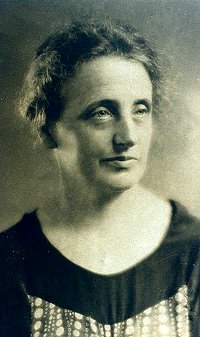About "Forest Green"
We begin most concerts with the traditional English melody that gave us our name - Forest Green. It has been set to music on many occasions - including as a traditional folk song called "The Plowboy's Dream" and even being the originally melody used for "Oh Little Town of Bethleham." Our favorite lyrics, however, were written in 1912 by Frances Whitmarsh Wile. You can find this in many old hymnals under the title provided by the first line of lyrics - "All Beautiful, the March of Day."

Frances Whitmarsh Wile, 1878-1939
|
All Beautiful, the March of Days
(set to "Forest Green," traditional English folk tune)
All beautiful, the march of days as seasons come and go
The hand that shaped the rose hath wrought the crystal of the snow.
Hath sent the hoary frost of heaven, the flowing waters sealed
And laid a silent loveliness on hill & wood & field.
O’er white expanses sparkling pure the radiant morns unfold
The solemn splendors of the night burn brighter through the cold
Life mounts in very throbbing vein, love deepens ‘round the hearth
And clearer sounds the angel hymn, “Good will to all on earth.”
O Thou from whose unfathomed law the year in beauty flows
Thyself the vision passing by in crystal and in rose
Day unto day doth utter speech, and night to night proclaim
In ever changing words of light the wonder of Thy name.
|
"Dives & Lazarus" (also known as "The Star of the County Down")
Like the previous song, the melody for the well-known song "The Star of the County Down" is actually much older than the lyrics. Although most people assume the "boy meets girl" lyrics are traditional, they were actually written by Cathal McGarvey (1866 – 1927) as an Irish ballad. The melody predates this by hundreds of years, however, and like "Forest Green" it has been set to lyrics on many occasions. The first published version was "Dives and Lazarus" in Francis Child’s compilation "The English and Scottish Popular Ballads." The ballad relates the plight of the beggar Lazarus and his entry into heaven, versus that of the wealthy Dives and his banishment to hell for having denied Lazarus food and drink.
Our favorite lyrics, however, written in 1906 by Jessie Adams, are as follows:
I Feel the Winds of God Today
I feel the winds of God today, today my sail I lift
Though heavy oft with drenching spray
And torn by many a rift.
If cast on rocks of discontent
Or shores of selfish ease,
I'll feel the wind of God again,
And I’ll put back to sea.
It is the winds of God that dries my vain regretful tears
Until with braver thoughts shall rise
The purer, brighter years.
Great Pilot of my onward way,
Thou wilt not let me drift
I feel the winds of God today, today my sail I lift
|

|
"Be Thou My Vision"
The last song we perform in our Celtic Hymn set is one of the earliest of all known Celtic songs. The lyrics were written in the 8th centuary by Dallan Forgaill, the Chief Bard among the Irish who later became Abbot and, upon being killed by priates, Saint Dallan. He died about 600, and was succeeded as Chief Bard by the young poet Seanchan, who avenged Dallan's death. It was translated from Irish to English by Mary Byrne in 1905, then versed by Eleanor H Hull in 1912 under the title "Be Thou My Vision."
The traditional name from the melody is "Slane," a reference to Slane Hill about 10 miles from Tara in Ireland's County Meath. This is the place where Saint Patrick began his ministry by lighting a fire on Easter Sunday, March 26th, 433 A.D., in defiance of strict orders by High King Leoghaire of Tara. Whether due to Patrick's courage or his stubbornness, Patrick's disobedience so impressed the High King that he listened intently to what Patrick had to say, and the conversion of pagan Ireland to Christianity began.
Be Thou My Vision
Be Thou my Vision, O Lord of my heart;
Naught be all else to me, save that Thou art
Thou my best thought, by day or by night,
Waking or sleeping, Thy presence my light.
Riches I heed not, nor man’s empty praise,
Thou mine inheritance, now and always:
Thou and Thou only, first in my heart,
High King of heaven, my treasure Thou art.
|

St Patrick casting out the snakes from Ireland
(Perhaps a metaphor for Christianity driving out Pagans)
|




